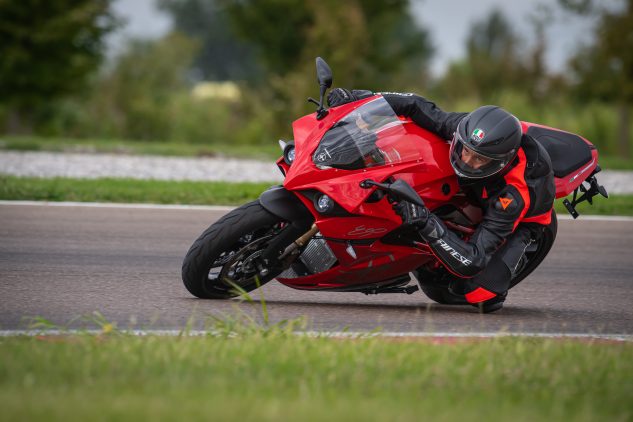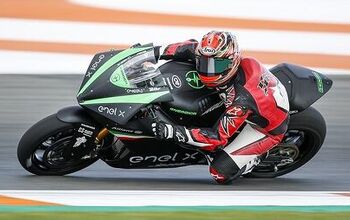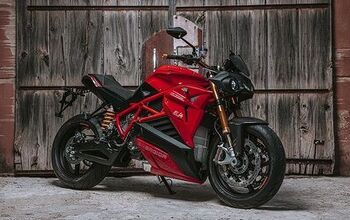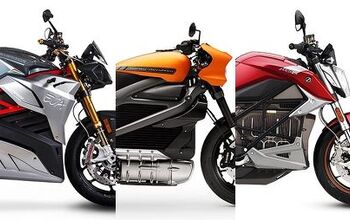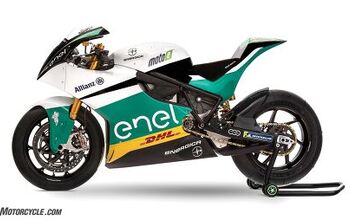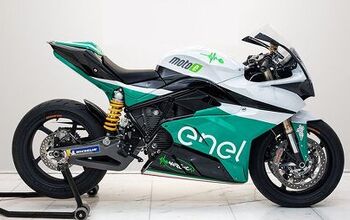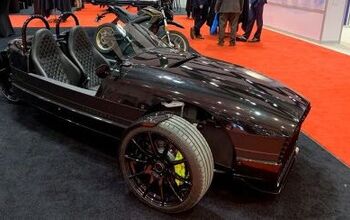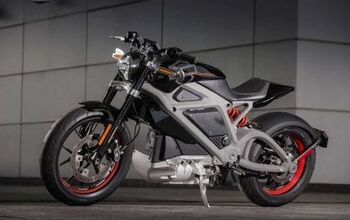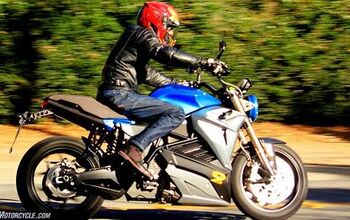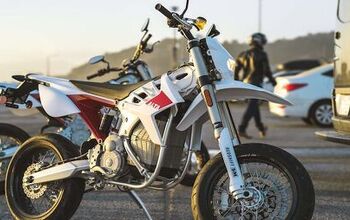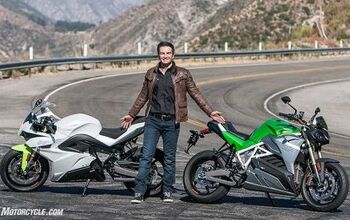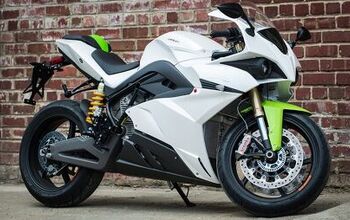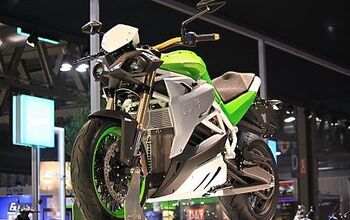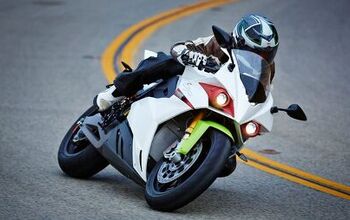Energica Motorcycles
Compared to some of the other manufacturers you’re more familiar with, Energica electric motorcycles is relatively new to the scene, having entered the electric motorcycle business in 2009. However, Energica is a subsidiary of the CRP Group, which has been a leader in manufacturing for the motorsports industry for over 45 years.
In 2009, the opportunity to develop a fully electric racing motorcycle was taken, and hence the eCRP project was born.
After two years of racing, the Group started working on a road-legal electric bike. Thanks to the CRP technologies developed for aerospace and F1, the Energica project was born.
In 2006, CRP Racing was established as the racing department of CRP Technology. From 2007 to 2010 CRP Racing started to race in the major Italian championships: the Honda Trophy (125cc) and the Italian Road Racing Championship (CIV).
The team achieved many victories during these years and good placements as a wild card in the 125cc MotoGP World Championship.
Starting in 2010, the team designed and created a real racing motorbike, the eCRP that took part in the first TTXGP championship and the e-Power FIM Championship. The e-CRP was runner-up in the world championship in 2011 and European Champion in 2010.
In 2018, Energica was chosen by Dorna as the single manufacturer for the FIM Enel MotoE World Cup, starting in 2019.
The sportbike model, the Ego, will be used by teams racing the FIM Enel MotoE World Cup, in a form modified for racing use, called the Ego Corsa.
Aside from its racing and sportbike pursuits, Energica also produces the Eva Ribelle and the Eva EsseEsse 9. Both are heavily based on the Ego platform, but with specific differences. Energica calls the Ribelle its electric streetfighter. Stripped of its nose fairing and wearing upright handlebars, it’s a much more comfortable position on the street that doesn’t give up any tech from the Ego.
The EsseEsse 9 takes the Ribelle and goes in a retro direction, with more subdued colors and styling, along with the round headlight reminiscent of cafe racers of yesteryear. As time, and technology, marches on, so too do technological updates in the EV world. Specifics will be highlighted in the model descriptions below, but a recent one (at least as of February 2021) is Energica’s announcement that it will start equipping its models with CHAdeMO charging capabilities; a vital addition in order to take advantage of the Japanese EV charging infrastructure.
Also new for 2021 is the RS option for all of its models. Taking the lessons learned as the spec manufacturer for the MotoE championship, Energica’s RS upgrades change the mapping within the VCU to deliver more performance. Now 0-60 mph can be reached in 2.6 seconds, 0.2 seconds faster than before.
Ego/Ego+
Coming to us from Italy is Energica and its three model offerings on our list of best electric motorcycles. First on the list is the Ego, Energica’s Italian electric sportbike. Boasting a 13.4 kW, air/oil-cooled lithium polymer battery and air/oil-cooled permanent magnet motor, the Ego puts out a claimed 107kW (roughly 145 hp) and 148 lb-ft of torque – numbers Energica says give it greater performance than 600cc internal combustion sportbikes.
Eva Ribelle
The Eva Ribelle is what happens when you take the Energica Ego, strip it of some fairings, and mount handlebars to it. Streetfighters are all the rage lately, and at their core, streetfighters are essentially naked versions of their sportbike derivatives with better ergonomics. The Eva Ribelle is no different. Battery and motor remain the same (meaning the Ribelle gets the 21.5 kW battery). Price for the Eva Ribelle is slightly less than the Ego+, at $22,160, which might be the deciding factor for some as to whether they prefer the sportbike or the naked. Interestingly, we last rode the Eva in 2016, and back then T-Rod scratched his head about the reduced performance output from the Eva despite sharing the same components as the Ego. However, a look at the 2018 Eva web page now states equal performance between the two. Either way, the same highlights and lowlights remain.
Eva Esseesse9
If the streetfighter fad is already losing its luster for you, maybe the newest fad – cafe racers – is more your thing? If so, the Eva Esseesse9 (SS9, named after Via Emilia (SS9), an ancient Italian road built in 187 BC to connect Rimini to Piacenza, along Italy’s Motor Valley where Energicas, Ferraris and Lamborghinis are manufactured) might be for you.



